Discover the key differences between sockeye and Atlantic salmon right away, focusing on taste, nutrition, and sustainability.
This guide helps you choose wisely between wild and farm-raised salmon, emphasizing sustainable fishing. Make an informed decision quickly. 🐟🌱
🐟 Taste & Nutrition: Beyond Omega-3 Hype!
| Nutrient | Sockeye (3oz) | Farmed Atlantic (3oz) |
| Calories | 156 | 206 |
| Fat (g) | 5.7 | 13 |
| Omega-3s (g) | 1.4 | 1.7 |
| Vitamin B12 | 5.4 mcg | 3.5 mcg |
| Vitamin D | 586 IU | 251 IU |
| Astaxanthin | 30+ mg | <2 mg |
Sockeye: Alaska’s Astaxanthin Superhero!
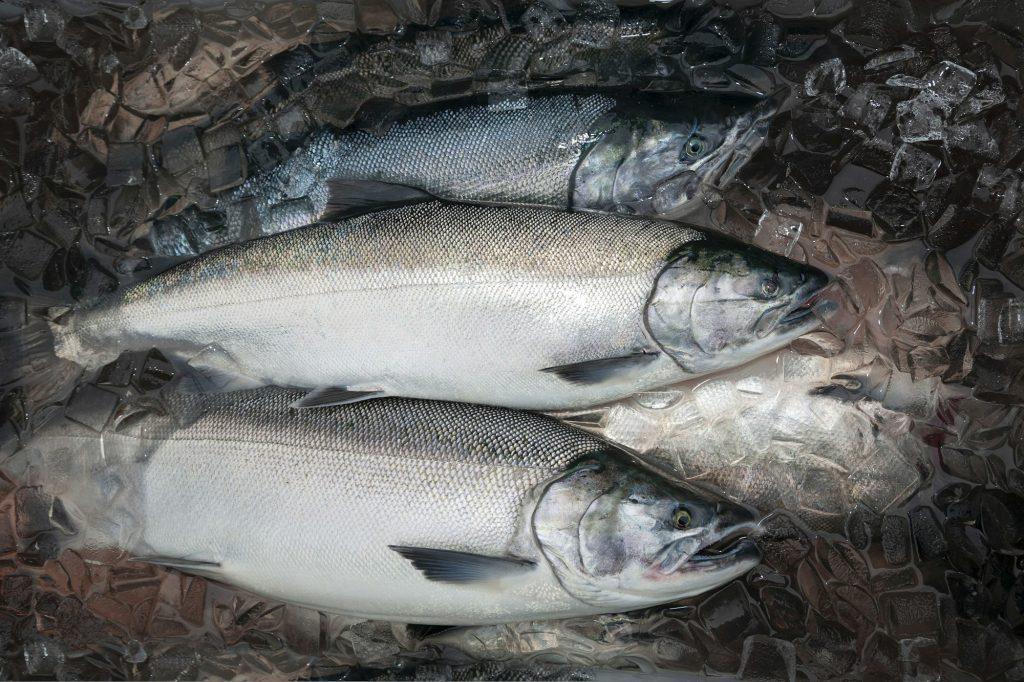
Wild-caught sockeye salmon from Alaska, offered by brands like Wild Planet and Kirkland Signature, features a fiery red color. Each 3 oz serving contains more than 30 mg of astaxanthin.
Besides astaxanthin, this salmon is rich in B vitamins, potassium, selenium, and other nutrients that boost brain health.
My fishing captain, Marty, shares that the sockeye’s vibrant color and rich taste come from their diet of krill and plankton. ‘Taste their buttery goodness, and you’ll be hooked!’ he assures.
Flavor Fiesta: Fatty Atlantic vs. Fishy Sockeye
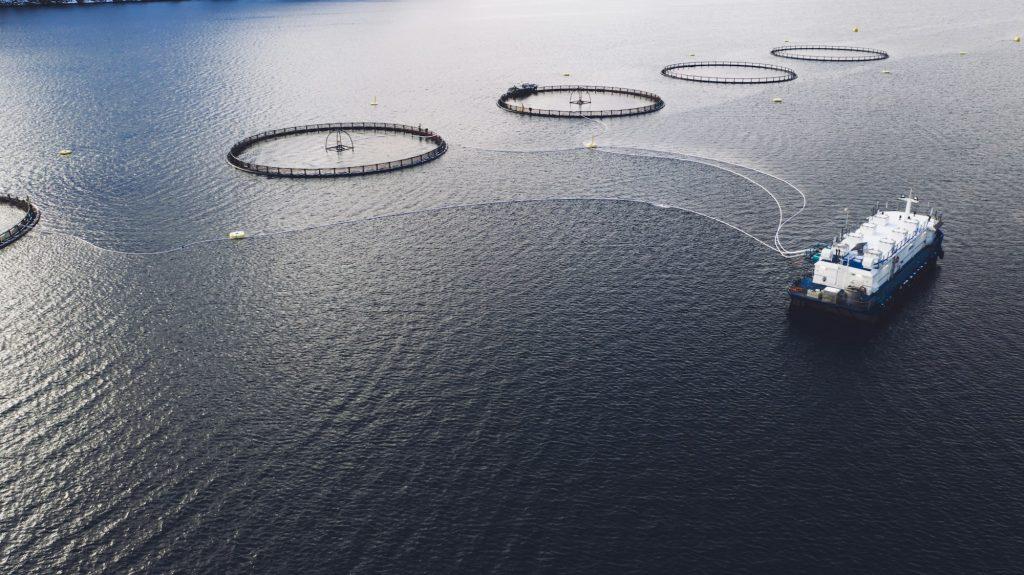
Farmed Atlantic salmon, known for their mild taste and fatty texture, display a pronounced orange color. This contrasts with the vibrant red of Pacific sockeye salmon.
Wild sockeye, in contrast, are known for their rich and intense fishy flavor, a result of their diet of shrimp and algae.
My niece Jess, a budding chef, humorously notes while grilling Atlantic salmon from Costco, ‘Farmed salmon seem to wear more lipstick!‘ Yet, she values the natural beauty and nutritional benefits of wild sockeye.
😀Fun fact: That fake rosy hue in some farmed Atlantic salmon? Often dye from astaxanthin additives! 🇨🇦 Opt for wild-caught Alaskan sockeye for the real, natural deal.
👉 Read: The Environmental Impact of Salmon Farming
Sustainability Savvy: Choose Salmon that Do Good!
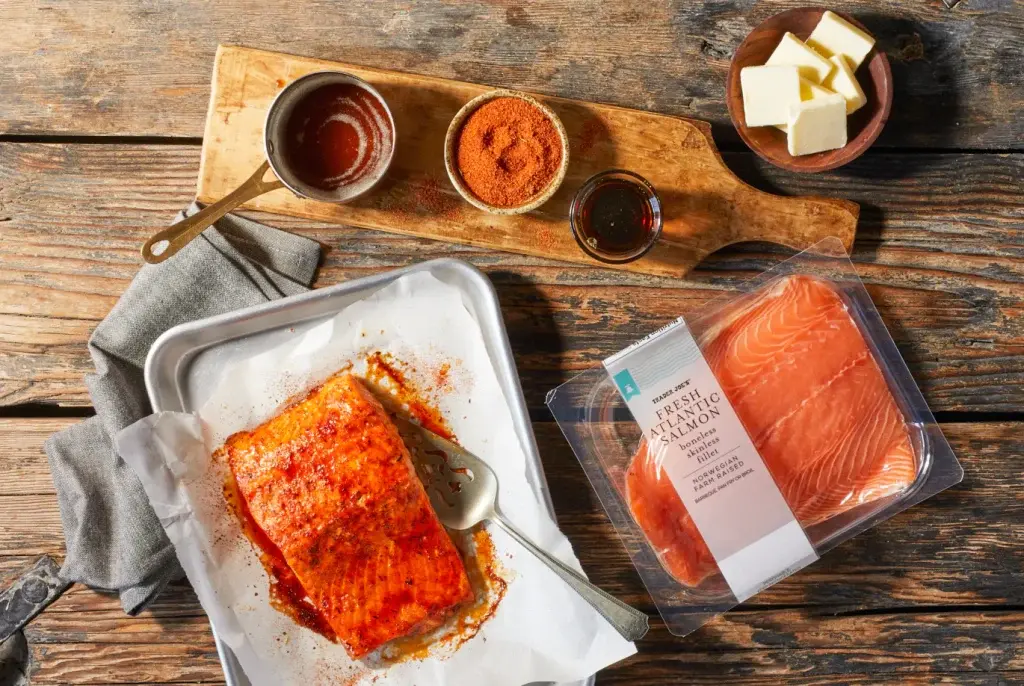
Farmed Atlantic Salmon: Convenient but Concerning
Trader Joe’s offers affordable Norwegian Atlantic salmon. However, its high production involves environmental downsides like pollution, antibiotic use, and higher Omega-6 levels due to corn and soy feed.
Selective breeding of these salmon prompts concerns about their nutrition and effects on the ocean’s genetic diversity.
For eco-friendly choices, seek farmed salmon with ASC or Global G.A.P. certifications. These labels signify practices that safeguard Pacific ecosystems, such as using low-density pens and preventing escapes.
Farms adhering to responsible management practices offer a sustainable source of nutrition.
The Comeback Kid: Wild Atlantic Salmon
Introducing the Atlantic salmon from Maine, a rare success in sustainability! This species faced near extinction due to overfishing and pollution. Yet, thanks to significant conservation efforts, including river restoration and hatchery support, it has made a comeback.
My colleague, fisheries biologist Dr. Rebecca, shares, ‘Indigenous groups’ ongoing stewardship has preserved the wild Atlantic salmon as a rare, orange-fleshed fish with exceptional flavor and a remarkable story.’
Be aware, however, that the scarcity of these catches is reflected in their premium pricing.
🎉 Pro Tip: Color Counts with Atlantic Salmon!
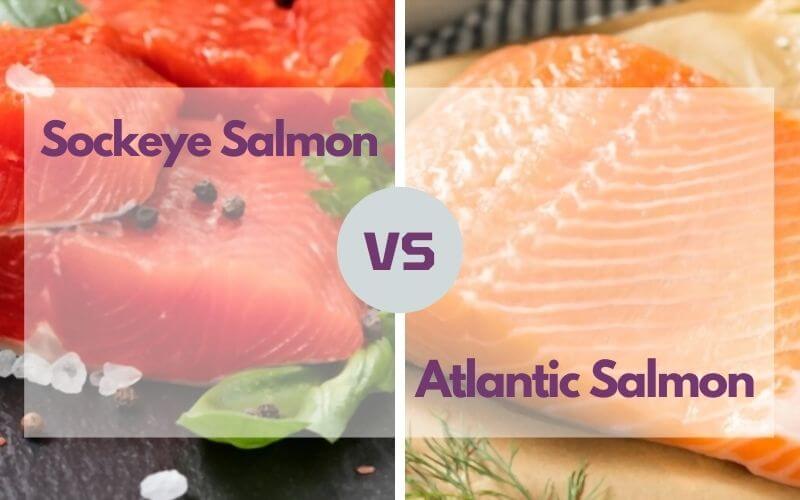
An insider tip for choosing Atlantic salmon: their color reveals their origin. Farmed Norwegian salmon, lacking a natural diet rich in pink-red pigments like astaxanthin, tend to be almost white or very pale orange.
In contrast, wild-caught Atlantic salmon, with their diet full of carotenoids, display vibrant rosy hues.
| Salmon Type | Flesh Color | Diet Source |
| Farmed Norwegian Atlantic | Pale orange-white | Plant-based feed |
| Wild Atlantic (Maine) | Bright orange-red | Natural crustaceans & algae |
Salmon CSI: Unveiling the Fishy Secrets!
Get ready to become a fish detective! Look closely at the wild-caught salmon fillet on your table. Subtle visual differences can reveal if it’s Pacific Sockeye or North Atlantic salmon.
Scale Sleuthing
Examine the scales closely: Sockeye salmon have smooth, small scales that hint at their streamlined shape. In contrast, Atlantic salmon scales feature noticeable dark spots. Dr. Rebecca, a biologist, adds that Atlantic salmon typically have fewer rows of scales along their sides.
The Mouth Matters
When investigating salmon types, look inside the mouth: Wild Sockeye salmon features a white mouth lining, contrasting with the dark gums and tongue of farmed Atlantic salmon.
If you’re uncertain about identifying the species, always consult your trusted fishmonger. Remember, subtle color variations can occur within the same type of salmon, influenced by factors like age, diet, and river of origin.
| Feature | Sockeye Salmon | Atlantic Salmon |
| Scales | Small & smooth | Large & speckled |
| Mouth Interior | White | Dark gray |
| Meat Color | Bright red-orange | Pale pink-orange |
Time to get your Salmon CSI detective badge! Let the fish investigations begin…🕵️♀️
Salmon Superpowers: More Than Meets the Eye!
Salmon provides far more than just delicious, sustainable protein – they offer cultural wisdom and health secrets well beyond Omega-3’s!
Native American Salmon Stewardship
Sockeye salmon are deeply valued by West Coast indigenous tribes, such as the Lummi Nation. My friend, Lummi fisherwoman Sarah, shares, ‘We honor the wild salmon for their incredible life journey, including their precise migration and determination. Our celebrations for the season’s first rich catch acknowledge how salmon support ecosystems, other beings, and our community.’ In line with this reverence, they uphold sustainable smokehouse methods.
Supercharged Salmon Bones
A Pacific salmon tip: Save the bones and heads after filleting. They’re rich in collagen, calcium, anti-inflammatory minerals, and serotonin, offering various health benefits.
In tradition, Lummi and other coastal communities dry and grind salmon frames into bone meal powder. Used as a sprinkle on foods or in soups, it enhances nutrition.
Bonus Round: King Salmon – The Undiscovered Champion!
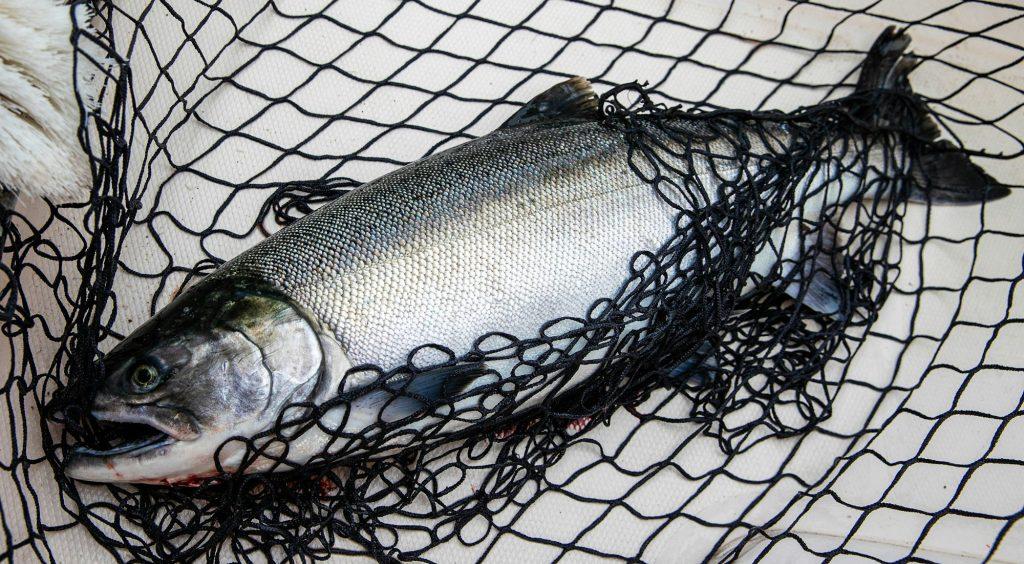
Interested in exploring more salmon varieties beyond Atlantic and Sockeye?
Let me introduce the bold and beautiful King Salmon. Known as Chinook salmon, this species from the Pacific Ocean offers a rich, luxurious flavor and a coral-red color that rivals tropical reefs.
A single King Salmon portion can weigh up to 5 pounds, known for its firm and substantial texture. Chinook salmon, known as ‘king’ for their size, undertake heroic migrations, swimming over 2,000 miles inland.
The next time you see King Salmon at your local fish market or Alaska Depot, consider trying this salmon royalty. Pan-roasted or cedar-plank grilled, its buttery decadence is sure to delight your taste buds.
Recipe Round-Up: Sockeye & Atlantic Salmon Delights!
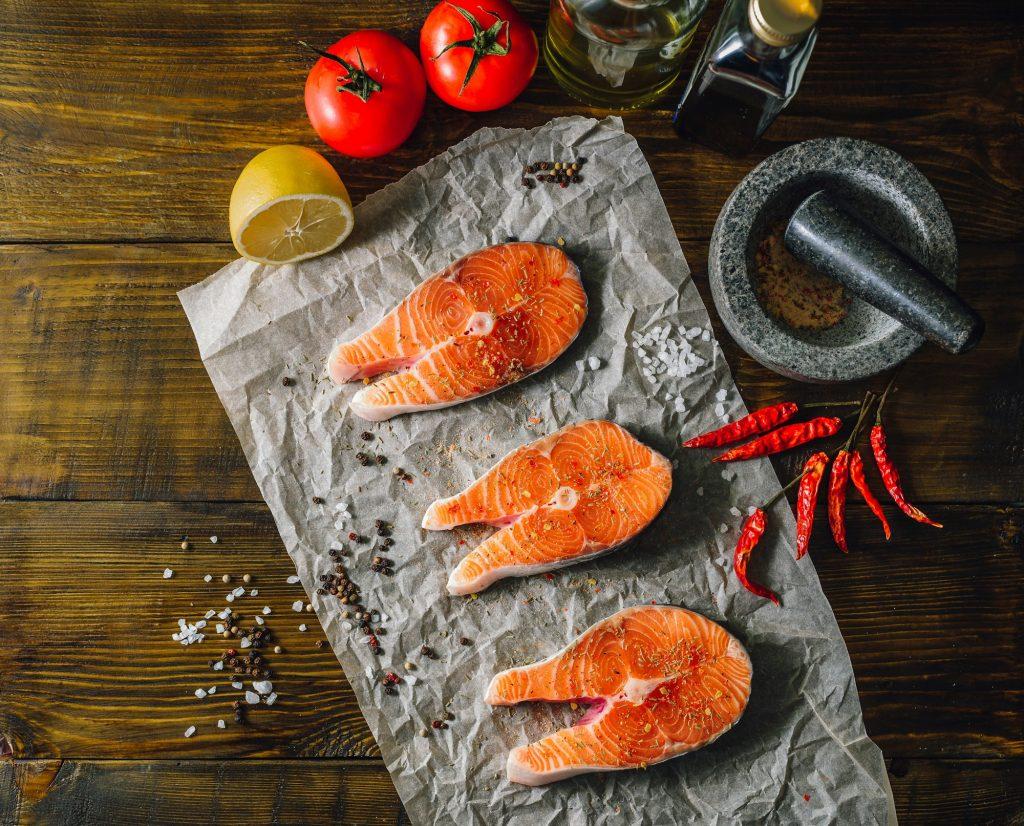
Prepare to explore your culinary skills with our recipes for Deming’s wild sockeye salmon and farmed Atlantic salmon!
Discover a range of flavors from Oregon pinot-glazed to Mediterranean herb-crusted, with 5 sockeye and 3 Atlantic salmon recipes selected for you.
I chose these recipes carefully to highlight each type of salmon’s best qualities, ensuring they’re both flavorful and easy to prepare on busy nights. Grab your grill pan or baking sheet and dive into cooking!
These recipes turn vitamin-rich salmon into gourmet meals quickly, perfect with salads, roasted veggies, or rice pilaf.
What about other Salmon Species?
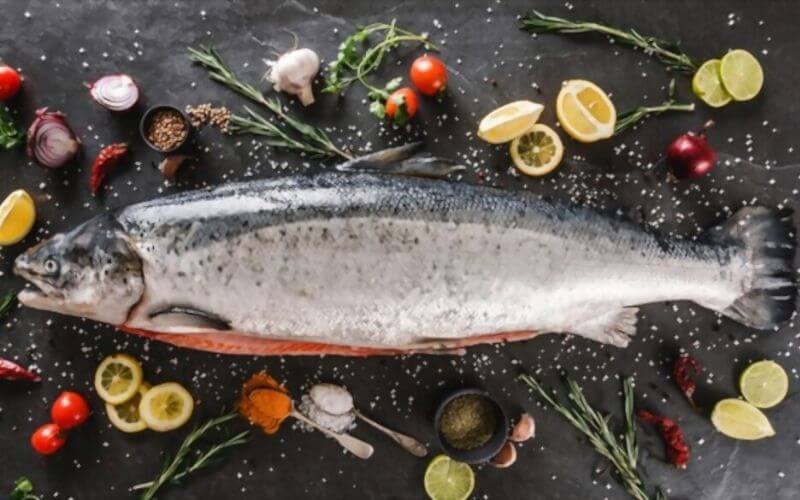
Sockeye vs Pink Salmon
Pink salmon is smaller and lighter in flavor compared to sockeye. It’s budget-friendly and commonly used in canned products. The color is also distinct; pink salmon has a light pink hue, unlike the bright red of sockeye.
Atlantic vs Pacific Salmon
In simple terms, both sockeye and pink salmon are varieties of Pacific salmon. Pacific salmon are generally wild-caught, have a rich flavor, and are smaller. In contrast, Atlantic salmon are larger, typically farmed, and have a milder flavor.
Conclusion
Congratulations on completing Salmon University! 🎓🐟 With new knowledge of taste secrets, sustainability, and culinary skills, you’re now equipped to choose salmon wisely, prioritizing nutrition and sustainability.
When choosing wild-caught seafood, consider the importance of responsible sourcing. Supporting sustainable fisheries helps protect our oceans, ensuring we can enjoy salmon for future generations.
Frequently Asked Questions
Which is better Atlantic salmon or sockeye salmon?
When it comes to nutrition, sockeye salmon is considered superior due to its higher antioxidant content, omega-3s, vitamins, and bold flavor from natural foraging. However, Atlantic salmon remains a top choice for affordability and convenience. Evaluate your priorities – if seeking maximum nutrients, sockeye triumphs, but Atlantic satisfies simpler weeknight needs.
Which is the healthiest salmon to eat?
Rich in healthy fats and protein, salmon stands as one of the most nutritious seafood options, but wild-caught Pacific sockeye tops for its impressive array of vitamins and antioxidants like astaxanthin. These nutrients give sockeye brighter flesh and added anti-inflammatory benefits.
Why is sockeye salmon the best?
Beyond leading in nutrients like B12, Vitamin D and antioxidants, the intense color and full flavor of wild sockeye salmon makes it a favorite among chefs and home cooks. Its striking color comes from natural foraging of carotenoid-rich krill and algae. Sockeye also offers a firmer texture that stands up to grilling.
Do you cook sockeye salmon different than regular salmon?
Luckily sockeye salmon fillets, even with their brilliant color, can be cooked very similar to Atlantic or other salmon. Sear, roast, grill or broil a Wild Planet sockeye filet using the same methods you would for regular salmon based on your taste – adjust only for the shorter cook time needed due to its firmer flesh.
Is Salmon Considered Red Meat?
Although salmon appears red, it isn’t considered red meat like beef or lamb. There are no health implications in eating salmon as there would be with red meat.
Why Is Salmon So Expensive?
Salmon is pricey for two main reasons. For starters, catching wild salmon is a difficult and time-consuming process. Moreover, salmon is very popular and fishing is restricted to prevent overfishing.
Which salmon is healthier, sockeye or Atlantic?
Both sockeye and Atlantic salmon are healthy and provide a good source of protein, vitamins, and minerals.
Is Sockeye Salmon Good?
Sockeye salmon benefits both your health and your taste buds. It’s rich in Omega-3 fatty acids and protein, which aid in preventing heart disease and stroke. Often dubbed “brain food,” sockeye salmon is a nutritional powerhouse.
What is the Nutritional Value of Atlantic Salmon?
A serving of cooked Atlantic salmon (85 grams) contains approximately 175 calories. It’s not just a protein source; it also provides essential nutrients like vitamin B12, selenium, niacin, phosphorus, thiamin, and vitamin A.
Is Atlantic Salmon Farmed?
Indeed, you can find farm-raised Atlantic salmon across the United States.
🌐 Sources
- usgs.gov – Questions and Answers About Salmon
- usgs.gov – How do salmon know where their home is when they return
- eatingwell.com – Types of Salmon and Which One You Should Buy
- healthline.com – Which is Better: Wild Salmon or Farmed Salmon?
- downshiftology.com – Coho vs Sockeye vs King Salmon: What’s The Difference?
- blog.nature.org – Salmon Migrate Using Earth’s Magnetic Field